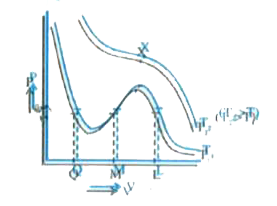What is Kb, if 0.5 g of solute ( molar mass 100g/mol) in 25g of solvent showed an elevation of 1∘C in B.P.Solution in Telugu
The correct Answer is:Kb=5
Step by step video, text & image solution for What is K_b, if 0.5 g of solute ( molar mass 100g/mol) in 25g of solvent showed an elevation of 1^@C in B.P. by Chemistry experts to help you in doubts & scoring excellent marks in Class 12 exams.
Topper's Solved these Questions
- BOOK - AAKASH SERIESCHAPTER - SOLUTIONS EXERCISE - Objective Exercise -1115videos
SOLUTIONS
- BOOK - AAKASH SERIESCHAPTER - SOLUTIONS EXERCISE - Objective Exercise -2110videos
SOLUTIONS
- BOOK - AAKASH SERIESCHAPTER - SOLUTIONS EXERCISE - Subjective Exercise-3 (Very Short Answer)11videos
SOLUTIONS
- BOOK - AAKASH SERIESCHAPTER - SOLIDS STATEEXERCISE - PRACTICE EXERCISE63videos
SOLIDS STATE
- BOOK - AAKASH SERIESCHAPTER - STATES OF MATTER EXERCISE - ADDITIONAL PRACTICE EXERCISE -PRACTICE SHEET (ADVANCED) (LINKED COMPREHENSION TYPE QUESTIONS) (PASSAGE- IV)2videos
STATES OF MATTER
Similar Questions
If air is taken as a binary solution, the solvent is
01:50View SolutionThe number of Glucose molecules present in 10 ml of decimolar solution is
03:06View SolutionWhat are colligative properties ? Give their names.
06:23View SolutionWhich of the following is considered as true amorphous solid
01:14View SolutionAt a particular temperature and pressure for a real gas Van der Waal's equation can be written as:
(P+aV2m)(Vm−b)=RT

where Vm is molar volume of gas. This is cubic equation in the variable Vm and therefore for any single value of P & T there should be 3 values of Vm. Which are shown in graph as Q, M and L.
As temperature is made to increase at a certain higher temperature the three values of Vm becomes identical. The temperature, pressure & molar volume at point X are called Tc, Pc & Vc for real gas. The compressibility factor in terms of Pc, Vc and T is called Zc.
The expression of Van dcr Waal's constant 'a' can be given as02:37View SolutionThe molality of a solute in a solvent (molar mass, 20g mol^(-1)) is 0.1 mol kg^(-1) . What is the mole fraction of the solute?
03:41View SolutionIf
m= molality of solution (molKg−1)
χsolute= mole fraction of solute
Msolvent= molar mass of solvent (gmol−1)02:33View SolutionIf C = molar concentration (mol L^(-1)) d = density of solution (Kg L^(-1)) chi_(solute) = mole fraction of solute M_(solute) = molar mass of solute in g mol^(-1) M_(solvent) = molar mass of solvent in g mol^(-1) then
View SolutionIf 0.5 g of a solute (molar mass 100 g mol−1) in 25 g of solvent elevates the boiling point by 1 K, the molal boiling point constant of the solvent is
02:52View SolutionA solution containing 12.5 g of non-electrolyte substance in 185 g of water shows boiling point elevation of 0.80 K. Calculate the molar mass of the substance. (Kb=0.52Kkgmol−1)
03:55View SolutionIf 1 g of solute (molar mass = 50 g mol^(-1) ) is dissolved in 50 g of solvent and the elevation in boiling point is 1 K. The molar boiling constant of the solvent is
View SolutionThe elevation in boiling point of a solution of 9.43 g of MgCl_2 in 1 kg of water is ( K_b = 0.52 K kg mol^(-1) , Molar mass of MgCl_2 = 94.3 g mol^(-1) )
03:08View SolutionFor a solvent Kb=5 kg mol−1 using this solvent, the solution records the elevation of boiling point of 0.5∘C The molality of the solution is
02:24View SolutionWhen 0.9 g of a non-volatile solute was dissovled in 45 g of benezene, the elevation of boiling point is 0.88^@C . If K_b for benezene is 2.53 K kg "mol"^(-1) , Calculate the molar mass of solute.
02:05View Solution250gmol−1मोलर द्रव्यमान के 25g विलेय को 100 मिलीलीटर पानी में घोलने पर विलयन प्राप्त होता है जिसका घनत्व 1.25gml−1 है विलयन की मोलरता एवं मोललता क्रमशः होगी
02:57View Solution

